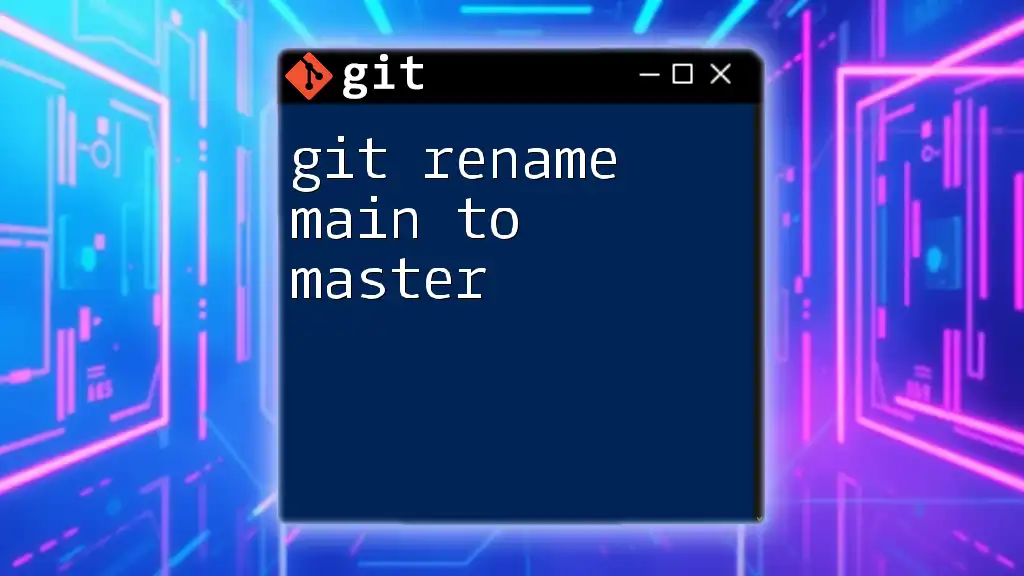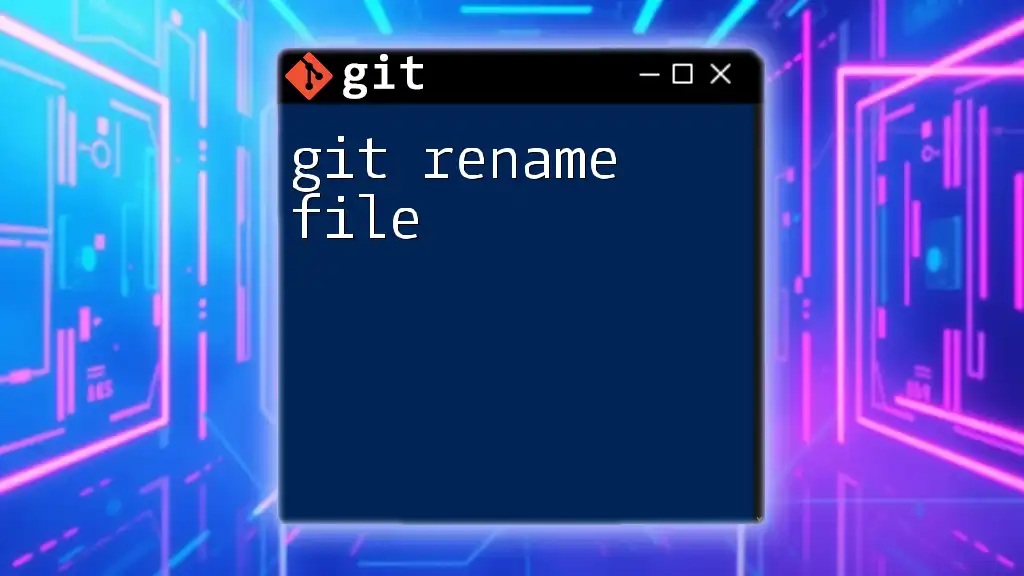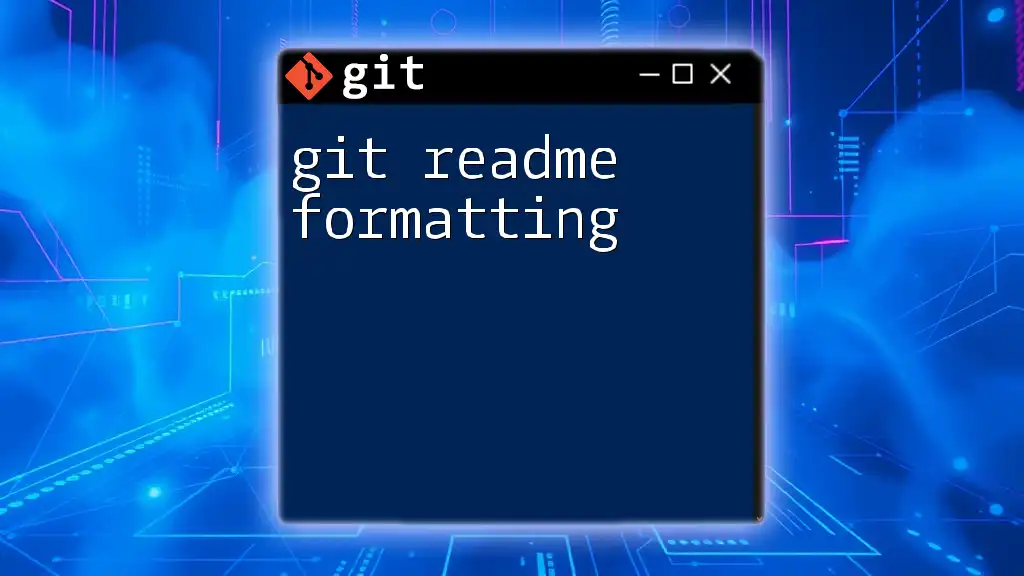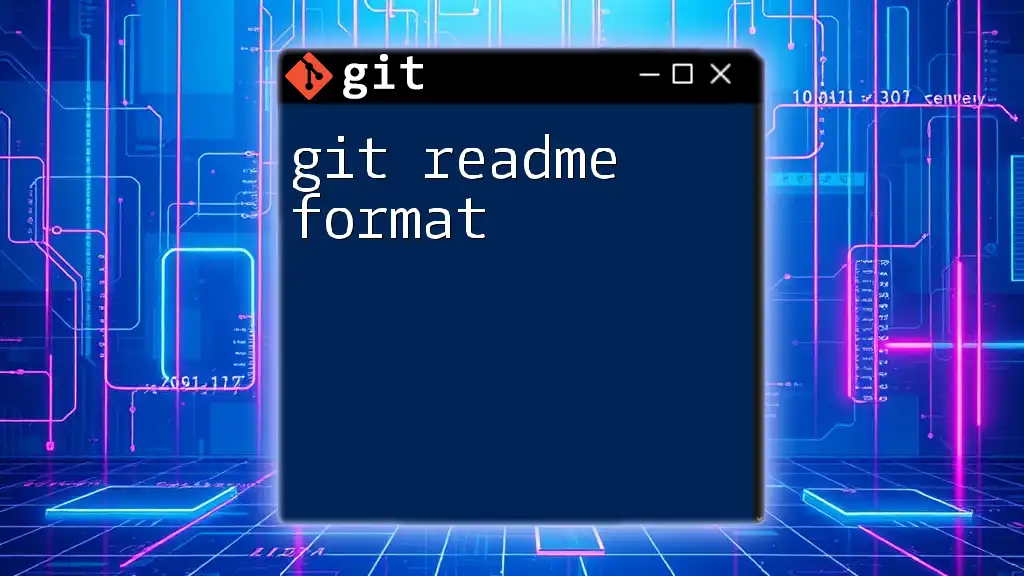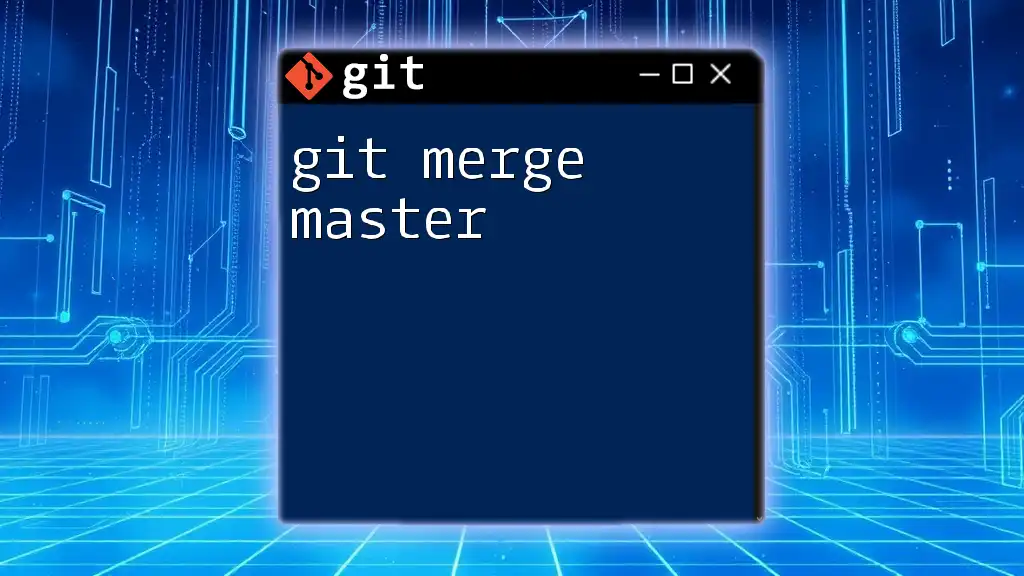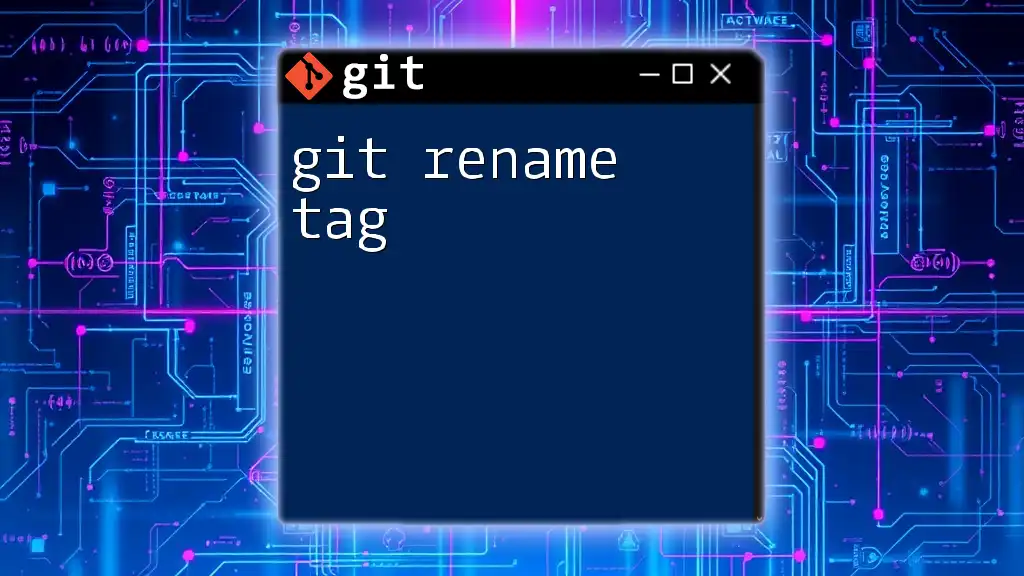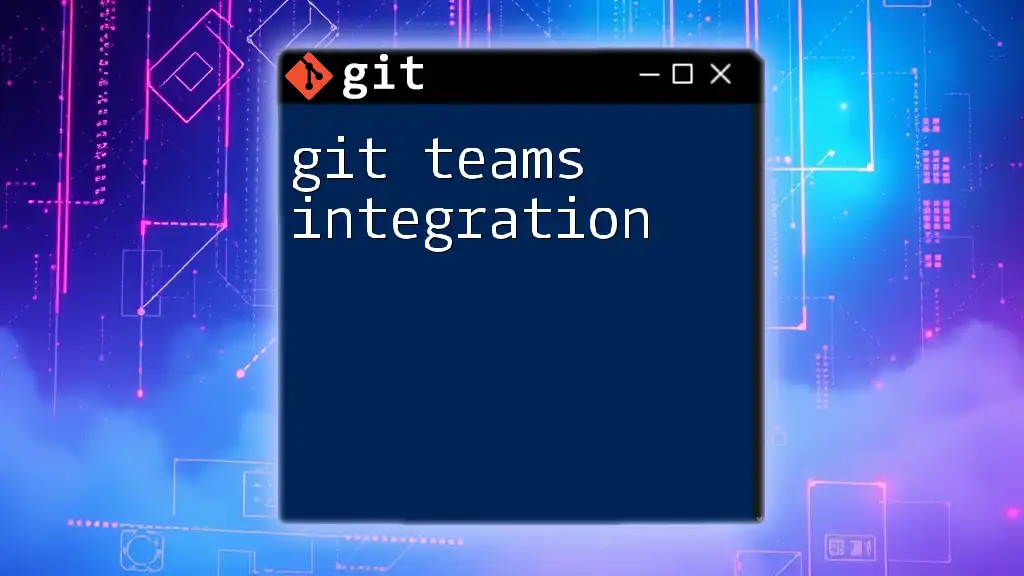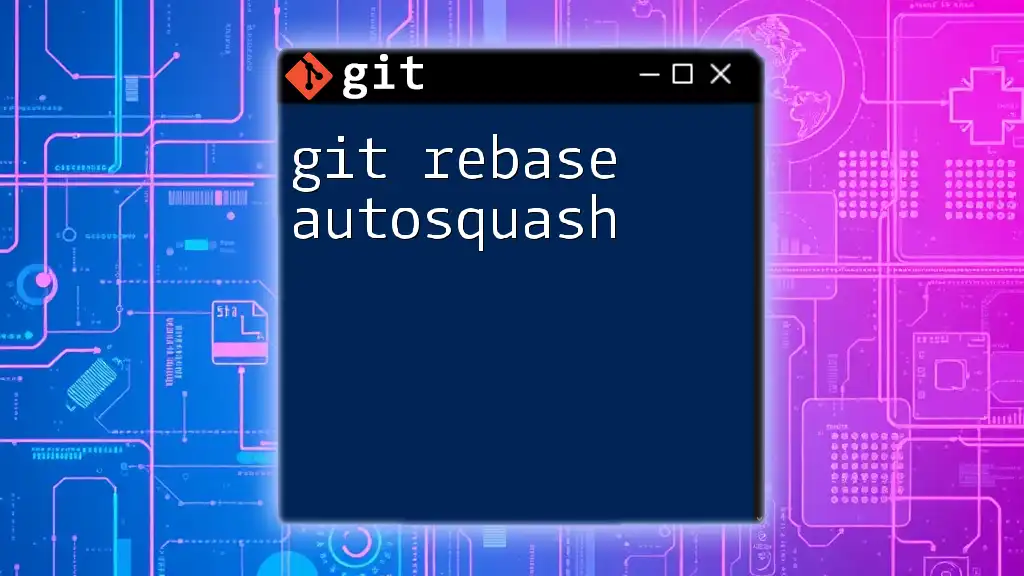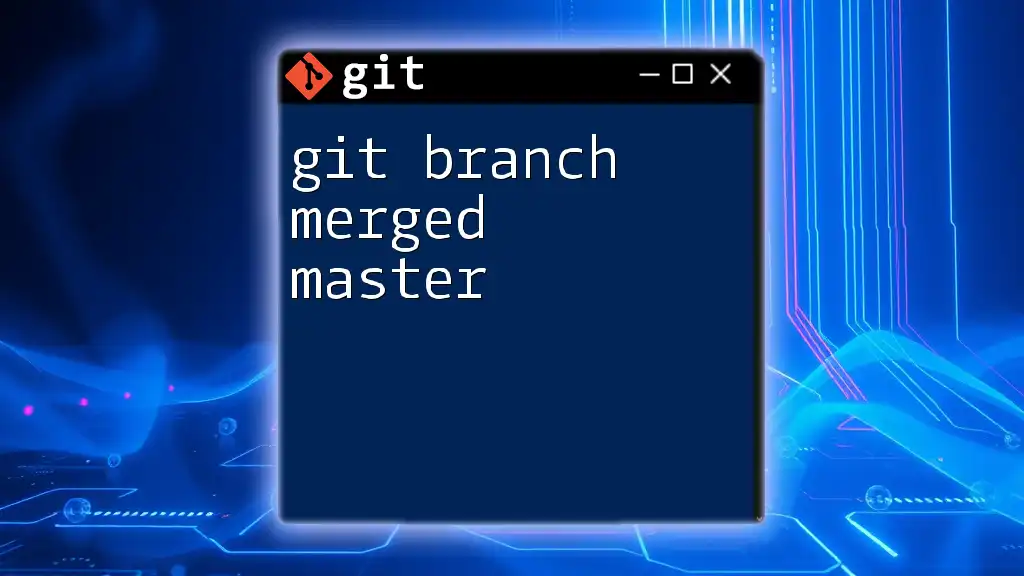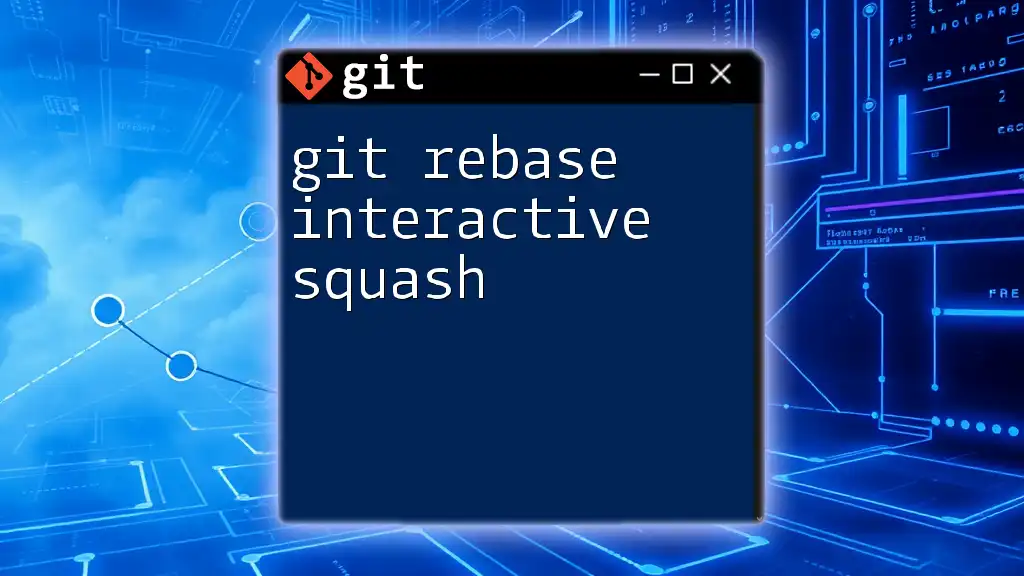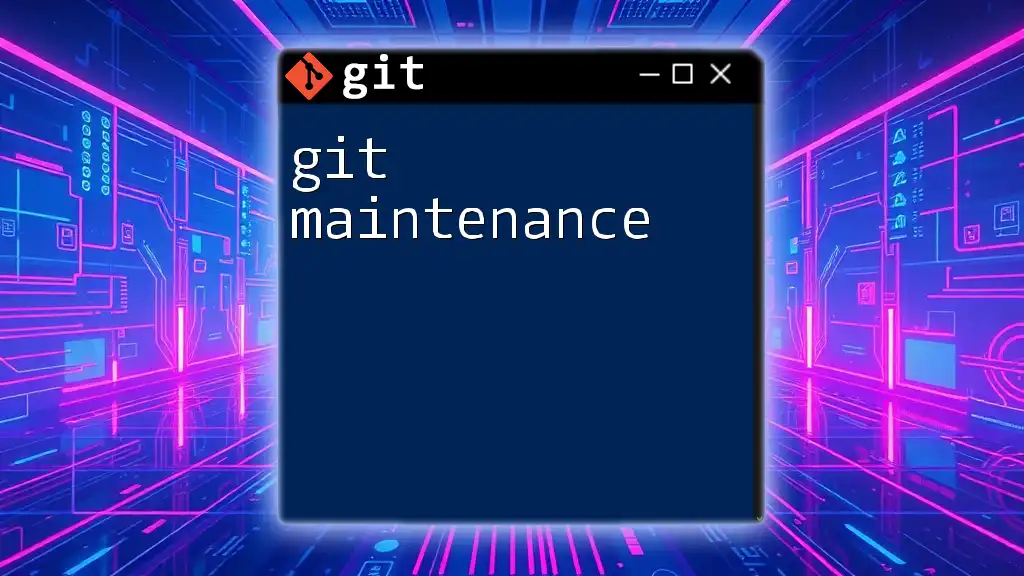To rename the current branch from `main` to `master`, you can use the following command in your terminal:
git branch -m main master
Understanding Git Branches
What is a Git Branch?
A branch in Git represents an independent line of development within a project. Each branch allows developers to work on features, bug fixes, or experiments in isolation from other changes. This facilitates a streamlined workflow where multiple developers can collaborate effectively without disrupting each other's work.
Overview of Default Branches
Historically, the default branch in Git has been named "master". This naming tradition has been under scrutiny, leading to a significant community shift toward using "main" as the default branch. This change aims to create an inclusive environment and aligns with broader social movements. Naming conventions may seem trivial, but they have an impact on team dynamics and inclusivity within the development community.
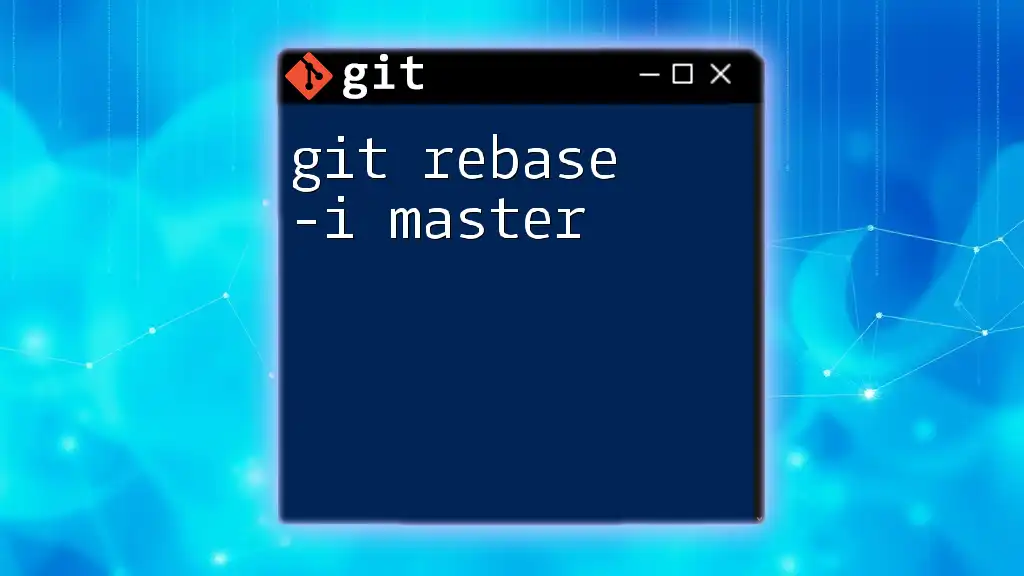
Prerequisites
Basic Git Setup
Before you start the process of renaming your branch, ensure you have Git installed on your machine. The installation process varies depending on your operating system:
-
Mac: You can install Git via Homebrew with the command:
brew install git -
Linux: Installation typically can be done through a package manager, for example:
sudo apt-get install git -
Windows: Download the installer from the official Git website and follow the installation instructions.
Once Git is installed, configure your user information using the following commands:
git config --global user.name "Your Name"
git config --global user.email "you@example.com"
Repository Initialization
You’ll need a Git repository to rename branches effectively. If you haven’t created one yet, follow these steps:
- Create a new directory and initialize a Git repo:
git init my-repo cd my-repo - You can add some files and commit them to establish the initial state of your repository.
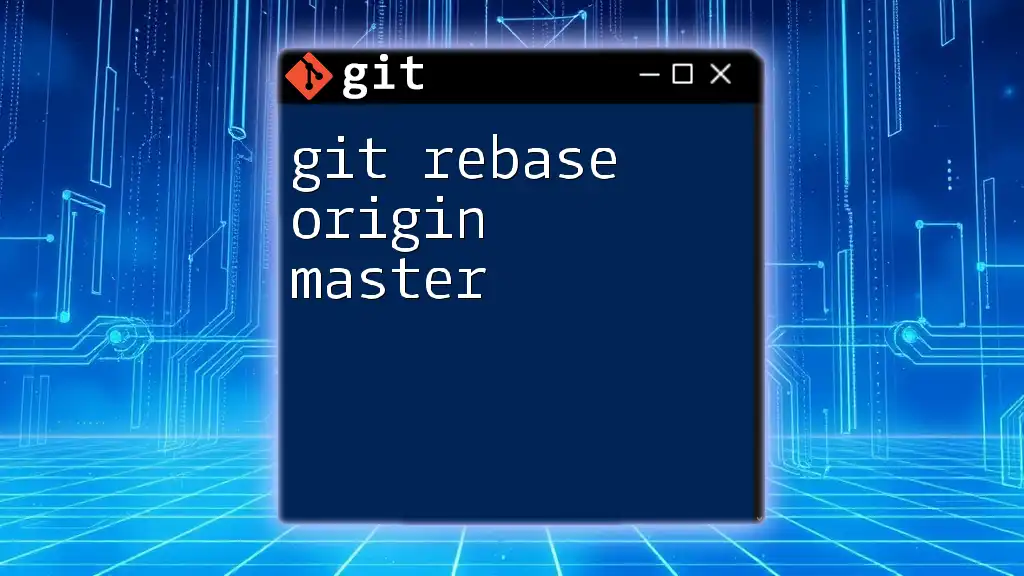
Steps to Rename the "main" Branch to "master"
Step 1: Check Your Current Branch Name
Before proceeding, confirm what your current branch is named. Use the following command:
git branch
This will provide a list of branches, indicating the current branch with an asterisk (*). If you see "main," you're ready to rename it.
Step 2: Renaming the Branch
To rename the "main" branch to "master," execute the command:
git branch -m main master
This command effectively changes the name of your current branch from main to master. If you encounter any errors, they often stem from uncommitted changes or being on the current branch you're attempting to rename. Ensure you resolve these issues before retrying.
Step 3: Updating Remote References (if applicable)
If your repository has a remote origin, you will need to push the renamed branch and remove the old reference.
Pushing the Renamed Branch
Use this command to push the newly renamed branch to your remote repository:
git push origin master
Deleting the Old Reference from Remote
To eliminate the main branch from the remote server permanently, execute:
git push origin --delete main

Updating Local Clones
Informing Team Members
It’s crucial to communicate changes to your team members. Anyone collaborating on the repository needs to be aware of the new branch naming convention to avoid confusion.
Pulling Changes
Your team members should update their local copies to reflect the new changes with the following commands:
git fetch origin
git checkout master
This allows them to switch to the new branch name and fetch any latest updates.
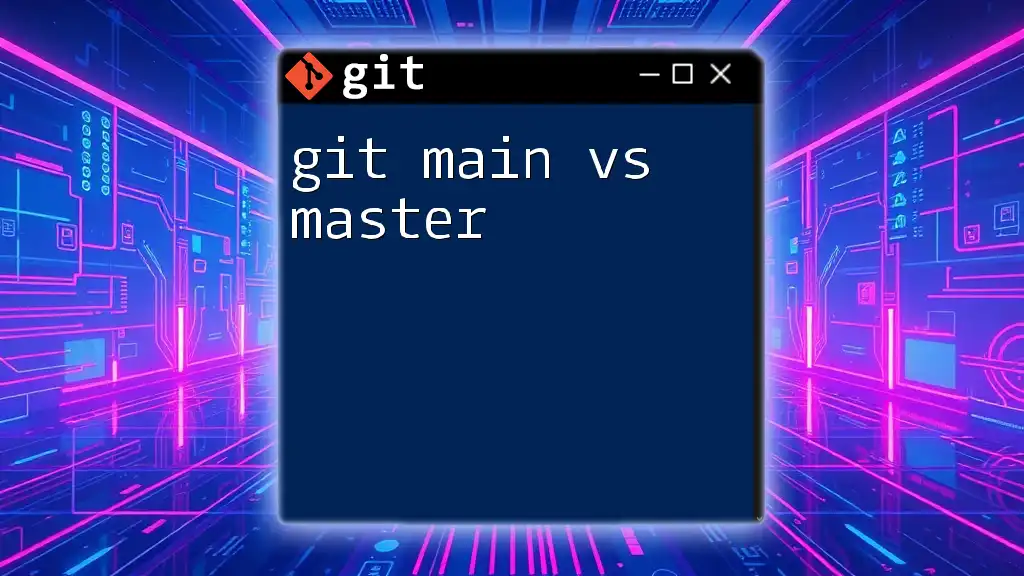
Validation and Testing
Verifying the Branch Rename
After renaming, confirm that the branch has been successfully updated both locally and remotely. You can check your current branch and list all branches, including those in the remote repository, with:
git branch -a
This command will show you all branches, confirming that "master" is available and "main" has been deleted successfully.
Testing Your Workflow
Testing is crucial after making such changes. Verify that merging, branching, and collaboration functions properly with the new branch name. Ensure that your development workflow remains intact.
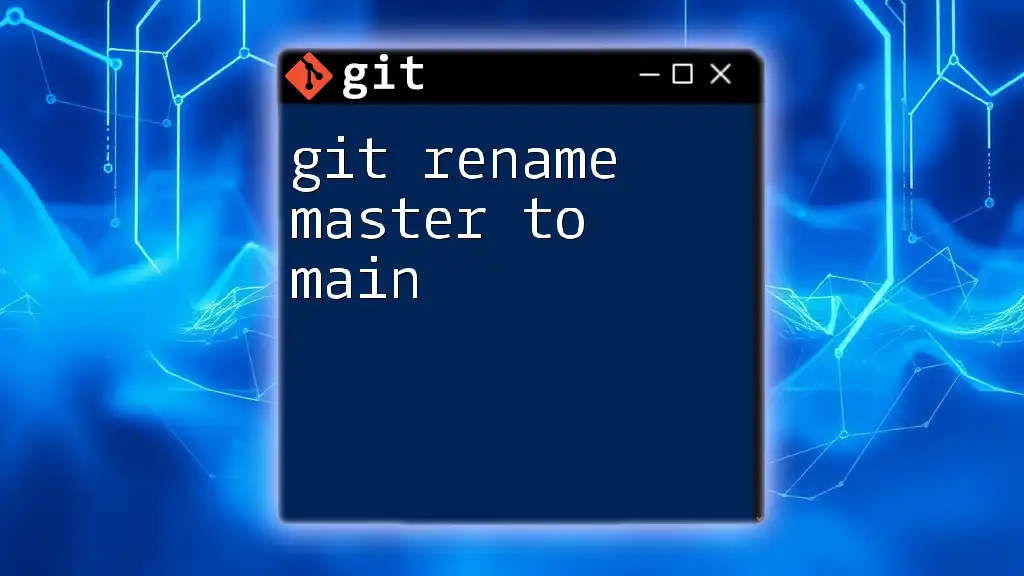
Best Practices
Document Your Changes
Maintain an updated documentation of your branch naming conventions within your project’s README. Include a clear note that the default branch has changed from "main" to "master." This transparency will help new contributors understand the project's conventions right from the start.
Consistent Naming Conventions
Adhering to consistent branch naming conventions across projects enhances clarity and communication, mitigating confusion during collaboration. Discuss and establish a standard that your team can follow for future projects.
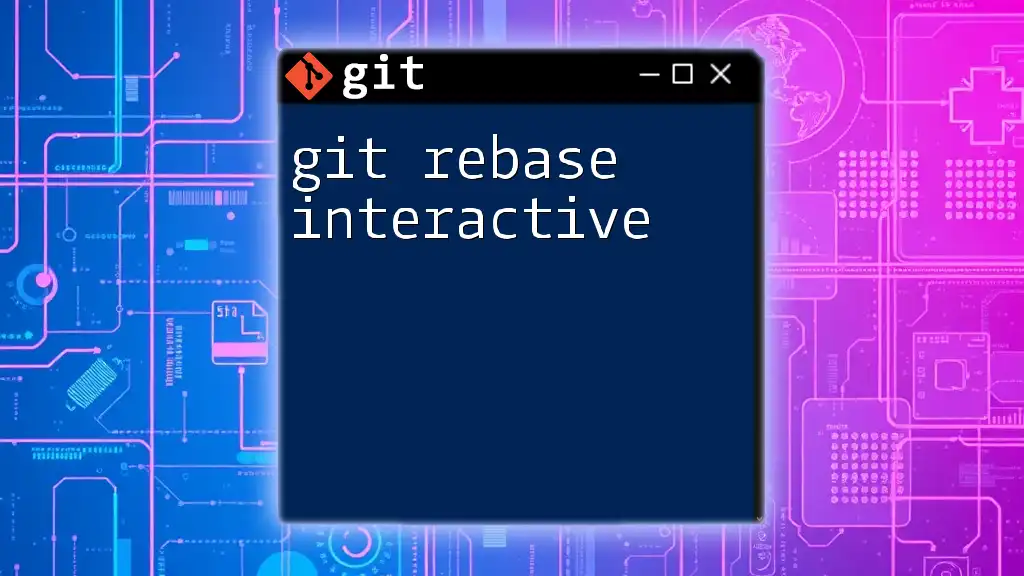
Troubleshooting Common Issues
Common Problems During Rename
Occasionally, you might encounter issues like locked files or uncommitted changes while renaming branches. Ensure you address these problems before proceeding. Uncommitted changes can be resolved by either committing or stashing them before renaming.
Git Configurations
If you face configuration issues, check your global Git configurations. You can list your current configurations with:
git config --list
This will help you ascertain whether all settings are correctly established.
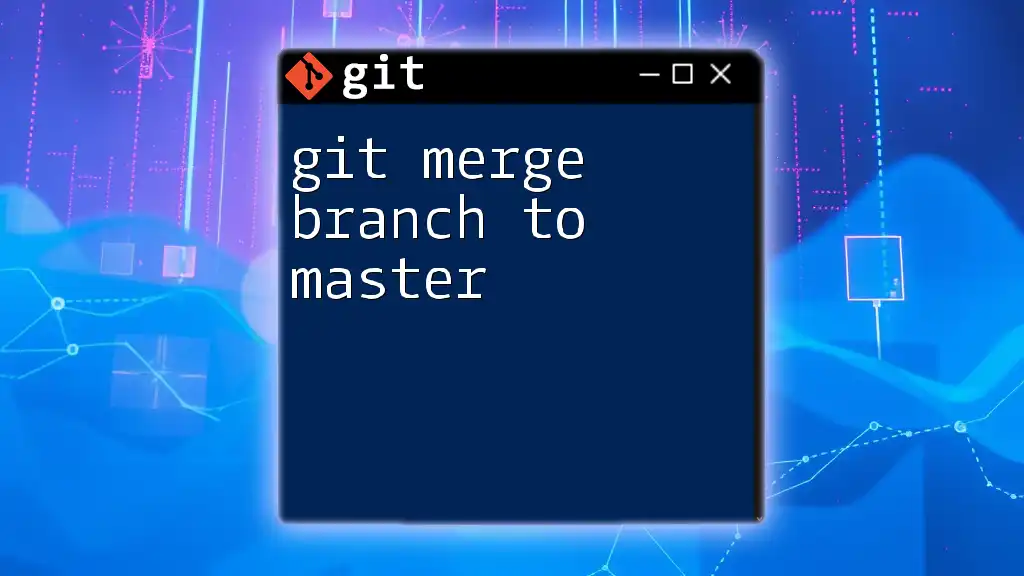
Conclusion
Renaming your default Git branch from "main" to "master" is a simple yet impactful change. By embracing this practice, you contribute to more inclusive and collaborative developer communities. As you navigate these changes, remember to communicate effectively with your team and document your conventions to help facilitate ongoing collaboration.
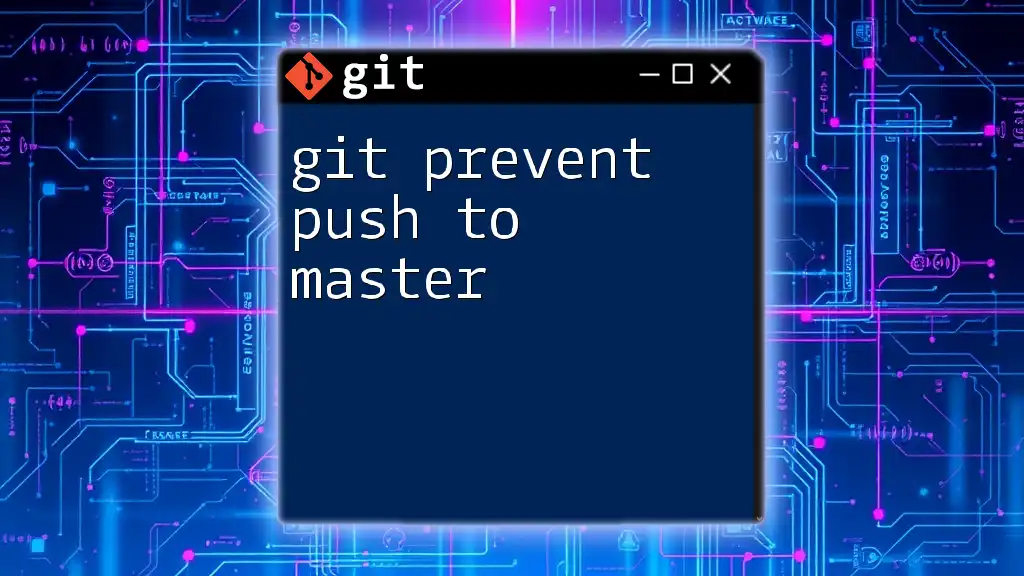
Additional Resources
Recommended Reading
For further reading, refer to the official Git documentation, which contains valuable insights and advanced techniques for branch management.
Workshops and Community Resources
Consider joining local workshops or looking for community resources where you can deepen your understanding of Git commands and branching strategies.

